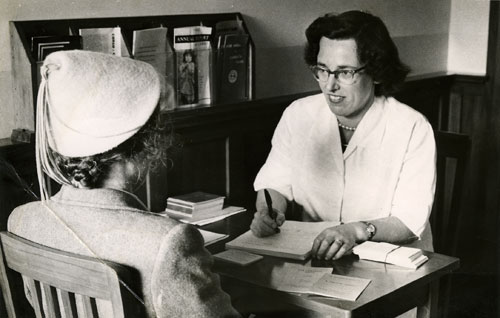
Controlling conception was a matter of life and death for New Zealand women until after the Second World War. Reliable contraception – diaphragms, caps, and pessaries that would kill sperm – was not widely available. Many women resorted to ‘regulating’ their periods with home remedies or mail-order pills, and a substantial number resorted to abortion. In the 1930s botched abortions caused the deaths of at least 264 women.
The Family Planning Association was acutely attuned to women’s personal experiences, and saw contraception as a health, economic and social concern. At first it provided education and postal advisory services, going on to open clinics after the Second World War. This carefully posed photograph of Dr Helen Barlow (right) during a consultation with Joyce Megget was published in a local newspaper when the Wellington clinic opened in 1959.
Te whakamahi i tēnei tūemi
Family Planning, Evening Post Collection (PAColl-0614)
Reference:
Evening Post, 16 April 1959
Permission of the Alexander Turnbull Library, National Library of New Zealand, Te Puna Mātauranga o Aotearoa, must be obtained before any re-use of this image.






Tāpiritia te tākupu hou